Jon Nellis
Contributor
For those following the Tahoe Benchmark testing this year you've probably read about and seen the pictures of the Genesis 600 and 1240 scooters from Logic Dive Gear (mislabeled by some as "Dive Logic") A project that has been under wraps and finally released to the world last week in Lake Tahoe.
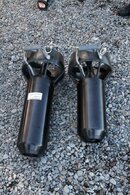
This is the next generation in scooter technology and the specs and design features are listed below with a video of the scooter here.
[video=youtube;eufuhWX-ZjM]http://www.youtube.com/watch?v=eufuhWX-ZjM&feature=player_embedded[/video]
Magnetic propeller coupling - Eliminates the dynamic shaft, which requires regular/annual replacement and is the primary leak failure point.
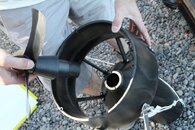
Waterproof externally battery recharging connector - Eliminates tor need to open the scooter for battery recharging, reducing the likelihood of seal damage/contamination and water drips/humidity build up inside which can damage electronics. Also reduces wear on the battery connectors so they last longer. Next to the connector is a vacuum/pressure testing port for leak testing or removing pressure from body due to altitude or environmental changes
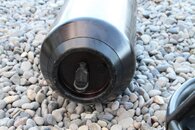
Environmentally sealed electronics section of tail cone. Should the body be opened and water dripped inside, the humidity cannot enter the motor/controller area.
Water cooled motor and controller - Motor is shrink-fit into the aluminum tail cone to provide maximum cooling, avoiding motor efficiency losses due to heat during long run times which can also lead to battery overheating. Controller heat-sink is also attached to tail cone for maximum cooling from the water.
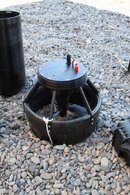
Full variable speed - The speed can be adjusted with your thumb (separate from the on-off trigger) from zero to 100% while running and the gradual acceleration at start up takes you to the selected speed without a sudden jerk.
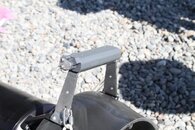
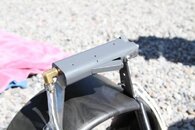
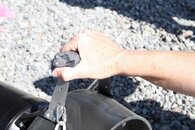
No stainless clamps to connect the body to the tail - Streamlines the flow into the nozzle and avoids galvanic corrosion due to dissimilar metals
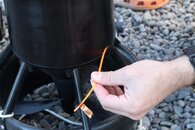
600Wh and 1240 Wh Lithium ion polymer batteries (600Wh shown)
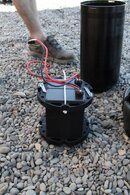
(Photos and video courtesy of Ben McGeever)
Maximum static thrust is around 80 lbs (actual test numbers to be posted soon)
-Hard anodized aluminum body.
-Depth rated to 600 feet (deeper rated units available special order).
-Weights - Genesis 600: 34.5 lbs, Genesis 1240 42 lbs.
-Recharge port can be converted to supply power for lights or other equipment with two different voltages (adjustable to any voltage) with optional power supplies.
-Optional inlet and exit screening.
Scooter demo days will be set up in the near future in Monterey and Lake Tahoe for anyone interested. Stay tuned for the dates!

This is the next generation in scooter technology and the specs and design features are listed below with a video of the scooter here.
[video=youtube;eufuhWX-ZjM]http://www.youtube.com/watch?v=eufuhWX-ZjM&feature=player_embedded[/video]
Magnetic propeller coupling - Eliminates the dynamic shaft, which requires regular/annual replacement and is the primary leak failure point.

Waterproof externally battery recharging connector - Eliminates tor need to open the scooter for battery recharging, reducing the likelihood of seal damage/contamination and water drips/humidity build up inside which can damage electronics. Also reduces wear on the battery connectors so they last longer. Next to the connector is a vacuum/pressure testing port for leak testing or removing pressure from body due to altitude or environmental changes

Environmentally sealed electronics section of tail cone. Should the body be opened and water dripped inside, the humidity cannot enter the motor/controller area.
Water cooled motor and controller - Motor is shrink-fit into the aluminum tail cone to provide maximum cooling, avoiding motor efficiency losses due to heat during long run times which can also lead to battery overheating. Controller heat-sink is also attached to tail cone for maximum cooling from the water.

Full variable speed - The speed can be adjusted with your thumb (separate from the on-off trigger) from zero to 100% while running and the gradual acceleration at start up takes you to the selected speed without a sudden jerk.



No stainless clamps to connect the body to the tail - Streamlines the flow into the nozzle and avoids galvanic corrosion due to dissimilar metals

600Wh and 1240 Wh Lithium ion polymer batteries (600Wh shown)

(Photos and video courtesy of Ben McGeever)
Maximum static thrust is around 80 lbs (actual test numbers to be posted soon)
-Hard anodized aluminum body.
-Depth rated to 600 feet (deeper rated units available special order).
-Weights - Genesis 600: 34.5 lbs, Genesis 1240 42 lbs.
-Recharge port can be converted to supply power for lights or other equipment with two different voltages (adjustable to any voltage) with optional power supplies.
-Optional inlet and exit screening.
Scooter demo days will be set up in the near future in Monterey and Lake Tahoe for anyone interested. Stay tuned for the dates!




